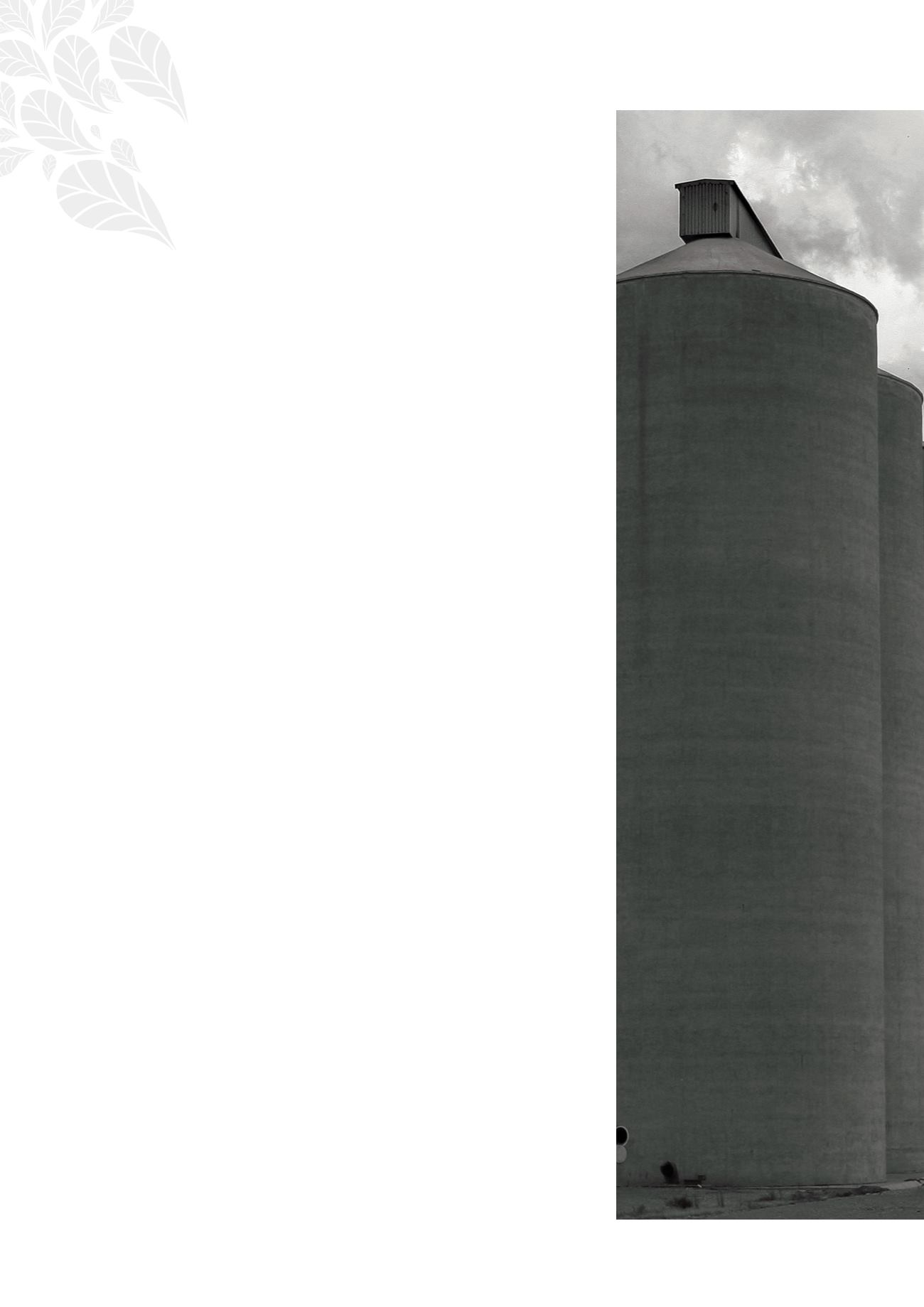

THE
GRAIN AND OILSEED INDUSTRY
OF SOUTH AFRICA – A JOURNEY THROUGH TIME
ႆႈ
the focus was only on white and yellow maize, but in the NOPO frame of refer-
ence three industries (sunflower, soybeans and groundnuts) were served.
The NOPO Executive decided that a balanced service to all three oilseeds should be
provided and the NOPO Congress established the practice that breakaway groups
for sunflower, soybeans and groundnuts be held so that industry-specific matters
could be dealt with. NOPO therefore regarded the fact that oilseeds should still be
serviced per crop in a new organisation as a core element of the discussions on
amalgamation.
The constitution that was ultimately accepted by Grain SA also specifically made
provision for specialist working groups within Grain SA, and for expertise to be
co-opted to the Executive should there not be sufficient expertise for a commodity
sector among the elected Executive Members.
1999: Termination of NOPO and founding of the
Grain Producer Organisation
During the first semester of 1999 the focus fell on final arrangements for phasing
out NOPO as industry organisation. Many meetings were held to handle the
transition and the dissolution in such a way that the interests of oilseeds producers
would still be served in the process.
The new industry structures established after the termination of the Oilseeds Board
was also active and through its representatives NOPO also made a constructive
contribution to the new Oilseeds Trust, Oilseed Advisory Committee, research
priorities committee, Sunflower and Soybean Forum and the Groundnuts Forum.
NOPO’s Executive says goodbye
On 17 April 1999 NOPO’s Executive said goodbye at a Final Executive meeting.
This was a special occasion, as two major objectives had been achieved as:
• The oilseeds industry’s structures were in place and functioned actively, namely the
trust, the advisory committee, forums and technical committees of the forums.
• The oilseeds industry’s structures were in place and functioned actively, namely the
trust, the advisory committee, forums and technical committees of the forums.
However, NOPO’s Executive wanted to confirm at the Final Executive meeting that
the principle of servicing of special interests of the smaller industries would still be
possible in the structures of the new Grain Producer Organisation and that not only
maize interests would be served in a new structure. Consequently a request was
submitted for servicing of special interests for sunflower, soybean and groundnut
producers to be entrenched in the constitution of the new organisation and that
this mandate be reconfirmed at NOPO’s final Congress.
At the farewell dinner the NOPO Executive Members each signed a commemorative
certificate. This commemorative certificate was handed to the new Grain Producer
Organisation at Bothaville after the dissolution of NOPO, after which it was placed in
the boardroom. As designated Executive officer of the new Grain Producer Organi-
sation, Van Zyl also attended the NOPO farewell function.
NOPO’s final Congress
NOPO’s final Congress took place in the Fanie Ferreira Hall on the NAMPO Harvest
Day grounds (later known as NAMPO Park) on 9 June 1999.
The theme of the opening address by Pretorius was: ‘NOPO made a difference’.
In a media article after the Congress he was quoted as follows:
‘We look back on the activities of NOPO over the past five years with pride, but
we also look ahead with confidence, where producers will address challenges
with combined abilities, expertise and leadership. This Congress leads to a new
era where all grain producers in South Africa will find a home within a single
organisation.’
TheCongress requested the Executive of the newGrain Producer Organisation to give
specific attention to a number of oilseeds matters, which were defined as Congress
















